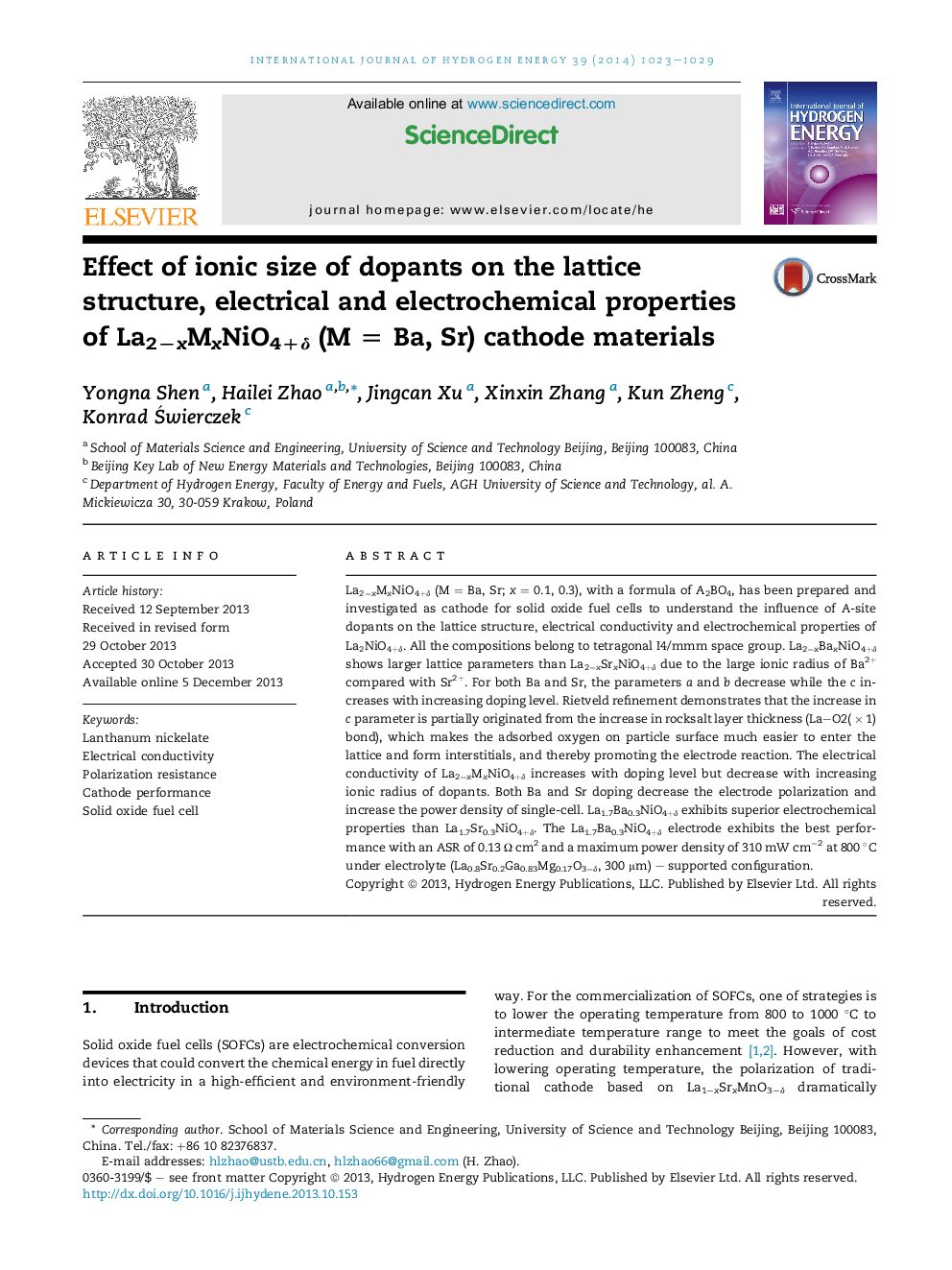| Article ID | Journal | Published Year | Pages | File Type |
|---|---|---|---|---|
| 1276550 | International Journal of Hydrogen Energy | 2014 | 7 Pages |
•Both Ba and Sr doping decrease parameters a and b but increase parameter c.•La2−xSrxNiO4+δ exhibits higher electronic conductivities than Ba-doped ones.•Ba-doping causes longer La–O2( × 1) bond, which is favorable for electrode reaction.•Ba-doping leads to a better electrochemical performance than Sr.
La2−xMxNiO4+δ (M = Ba, Sr; x = 0.1, 0.3), with a formula of A2BO4, has been prepared and investigated as cathode for solid oxide fuel cells to understand the influence of A-site dopants on the lattice structure, electrical conductivity and electrochemical properties of La2NiO4+δ. All the compositions belong to tetragonal I4/mmm space group. La2−xBaxNiO4+δ shows larger lattice parameters than La2−xSrxNiO4+δ due to the large ionic radius of Ba2+ compared with Sr2+. For both Ba and Sr, the parameters a and b decrease while the c increases with increasing doping level. Rietveld refinement demonstrates that the increase in c parameter is partially originated from the increase in rocksalt layer thickness (La–O2( × 1) bond), which makes the adsorbed oxygen on particle surface much easier to enter the lattice and form interstitials, and thereby promoting the electrode reaction. The electrical conductivity of La2−xMxNiO4+δ increases with doping level but decrease with increasing ionic radius of dopants. Both Ba and Sr doping decrease the electrode polarization and increase the power density of single-cell. La1.7Ba0.3NiO4+δ exhibits superior electrochemical properties than La1.7Sr0.3NiO4+δ. The La1.7Ba0.3NiO4+δ electrode exhibits the best performance with an ASR of 0.13 Ω cm2 and a maximum power density of 310 mW cm−2 at 800 °C under electrolyte (La0.8Sr0.2Ga0.83Mg0.17O3−δ, 300 μm) – supported configuration.
